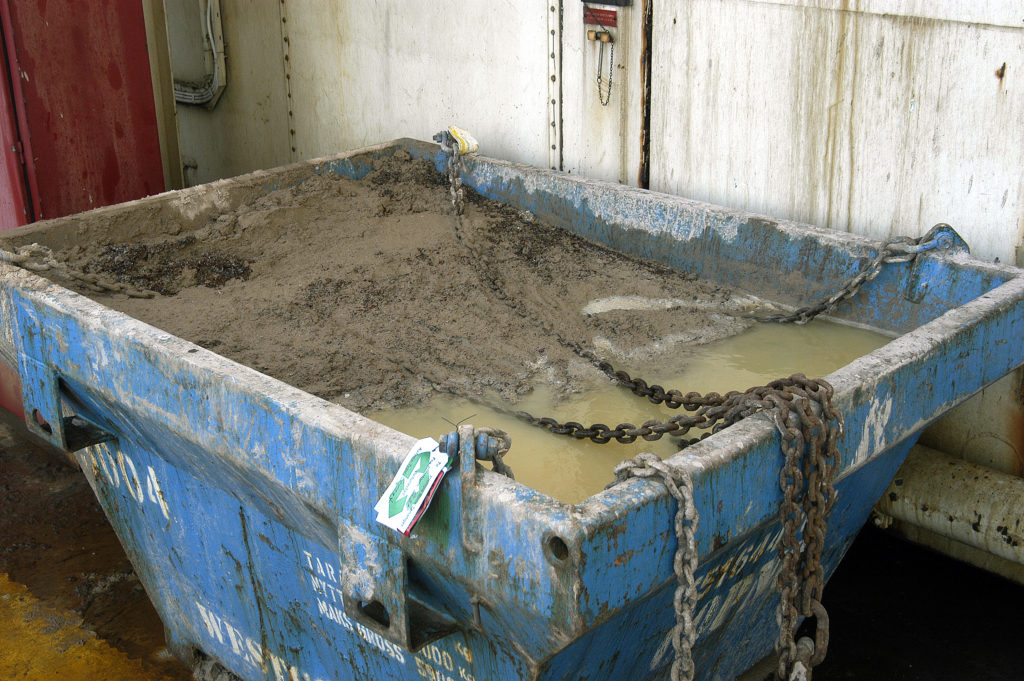Cement gone astray

When transporting cement, compressed air is used to blow it from the silo to the mixing plant, Torstensen explains. This air has to be ventilated out before the cement reaches the mixer, using a vent line to the sea.

The waste air contains a lot of dust. On Bravo, they had managed to connect the vent to the line which blew cement up from the supply ships to the tanks. Nobody noticed this until the day when both operations were to be carried out simultaneously.
Just as we were about to start the cement job, they started blowing cement from a ship under a pressure much higher than in our vent line. The result was that the powder was blown straight into where we were working, so the tanks filled up and spilled over.
All I saw of my assistant, Johan Ørke, was the whites in his eyes. We stood in cement up to our ears and had no idea what had happened.
Johan was completely grey and his eyes began to redden from the irritation. The mood got a bit irritable, because we were losing time because of this.
I couldn’t understand what was going on, but went over to the railing to draw breath and saw the supply ship blowing cement. We then had to establish where the delivery line went. After following its course, we found that the two were connected.
Another episode occurred on Ocean Viking. This rig had been docked, in part to replace the cement line with one which could cope with higher pressure. When it returned offshore, we ran tests to see that everything worked properly.
We pumped water through, but the pressure then rose and I thought a valve must have been closed. I followed the line, but found none shut. Everything looked open and normal. We tried again, but got counterpressure right away. So we had to go over the line again, section by section, to see if anything had got struck in it.
Finally, we found the fault. Those who had installed the cement line had worked from two different drawings. One covered the section from the cement mixer to the mud room, where the installer had welded it directly to the wall. Somebody else had worked from the other end and welded the pipe to the opposite side of the wall.
But nobody had cut a hole in it!
A similar thing happened on Albuskjell, where a cement line was also blocked and had to checked section by section to find the fault.
In the end, they discovered 24 empty wine bottles in the line.
The rig had been built in France, where the workers had drunk wine at lunch and then stuffed the empty bottles in the most convenient tube.
Converted into the hours it took to correct this, it proved hugely expensive. The rig couldn’t do anything until the cement line had been opened up.
Recounted by Nordal Torstensen
